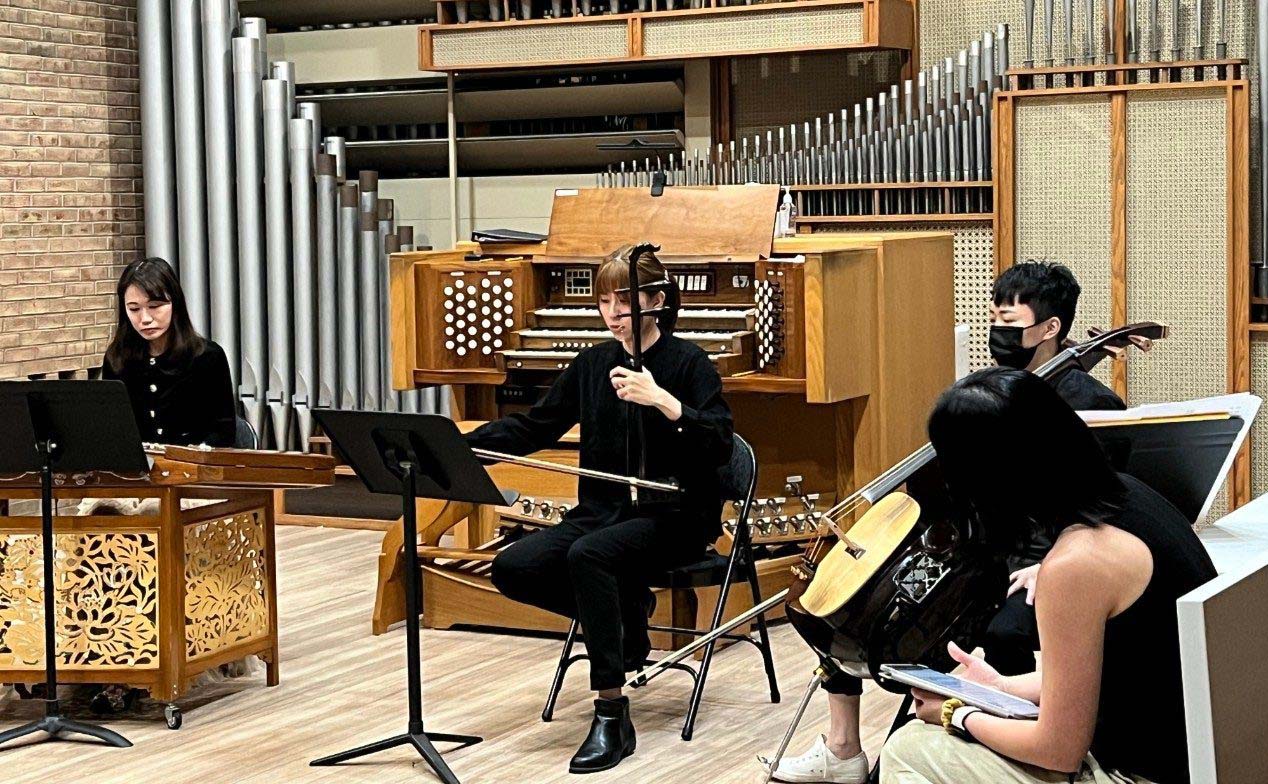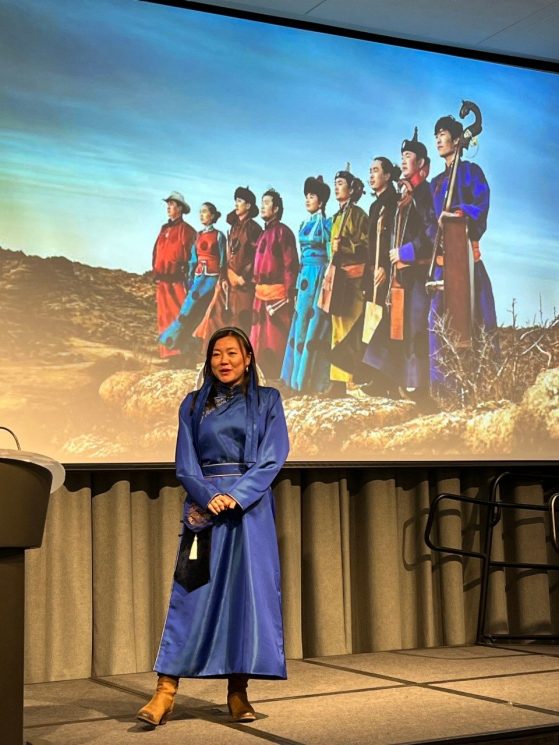Reaching more than 1000 attendees—the U-M Festival of Asian Music is a gateway to traditional Asian music and new fusions, art & theatre, visual spectacle, and iconic aesthetics.
More than 20 immersive experiences featuring musical and theatrical traditions/innovations from across Asia are being offered this fall to U-M students, faculty, the general public, and K-12 teachers partly through the auspices of a U.S. Department of Education TVI grant, the William P. Malm Stearns Collection Concert Series, and area study centers of the International Institute.

Members of the National Chinese Orchestra Taiwan at a lecture demonstration
Video of instrument demonstrations by soloists of the National Chinese Orchestra of Taiwan
Organized together as a Festival of Asian Music (FAM), university partners, community groups, and student organizations are collaborating to connect audiences with master artists and scholars on today’s global stage. The roster of participants includes choreographers/artists from Hong Kong, solo instrumentalists from Taiwan’s national orchestra, percussion masters from Korea, as well as local and regional artists who have showcased such cutting-edge innovations as violin and erhu pairings, flute and tabla fusions, and violin interpretations of traditional Korean sanjo music. On a more theatrical level, a South Indian dance drama duo reenacted the ten-headed Ravana epic while a modern Japanese dancer performed a feminist reworking of a haunted noh drama. Midway through the events, the global bells of the Baird Carillon in Burton Tower rung in new Asian compositions while the bonangs and gongs of the gamelan ensemble will close the festival in December.

Percussionist Suwan Choi performing “pungmul,” a Korean folk tradition that includes singing, drumming, and dancing.

“Sanjo,” a style of traditional Korean music, performed on the violin by Soh-Hyun P. Altino.
As part of the FAM program, an area studies/music course was created that allows U-M students to talk with artists, arts administrators, and faculty members to explore how Asian performing arts are an integral part of the life of the university and community. The performances and related activities constitute the course’s primary ‘textbook’ and are a stepping stone for researching a performance’s historical and social context.
My family and I attended “Playing Traditional Korean Sanjo on the Violin” – It was incredible. We learned so much about Korean music and Ms. Altino’s journey to playing the music of her ancestry. She discovered her grandfather had composed sanjo before the compelling performance. I would definitely rate this a “5” on your 1-5 scale. I’ve already discussed this with my classes – as we are discussing immigration in my U.S. History class – I tied it to the fact that no matter where we go and for how long, we carry our ancestry, our heritage, our traditions with us, and how we should celebrate that.

Screening of “AnDa Union” by U-M Assistant Professor, Sangseraima Ujeed, Dept. of Asian Languages and Cultures.
U-M Festival of Asian Music Partners:
University of Michigan Stearns Collection of Musical Instruments; School of Music, Theatre & Dance; National East Asia Resource Center (Lieberthal-Rogel Center for Chinese Studies, Center for Japanese Studies, and Nam Center for Korean Studies); Center for Southeast Asian Studies; Center for South Asian Studies; Center for World Performance Studies; Michigan Taiwanese American Organization; Qingyun Chinese Student Organization; and Sazanami Taiko Arts Ensemble.
A playlist from the performance “Splendid Sounds of Taiwain” at Hill Auditorium, featuring Soloists of the internationally-acclaimed National Chinese Orchestra Taiwan (NCO).
